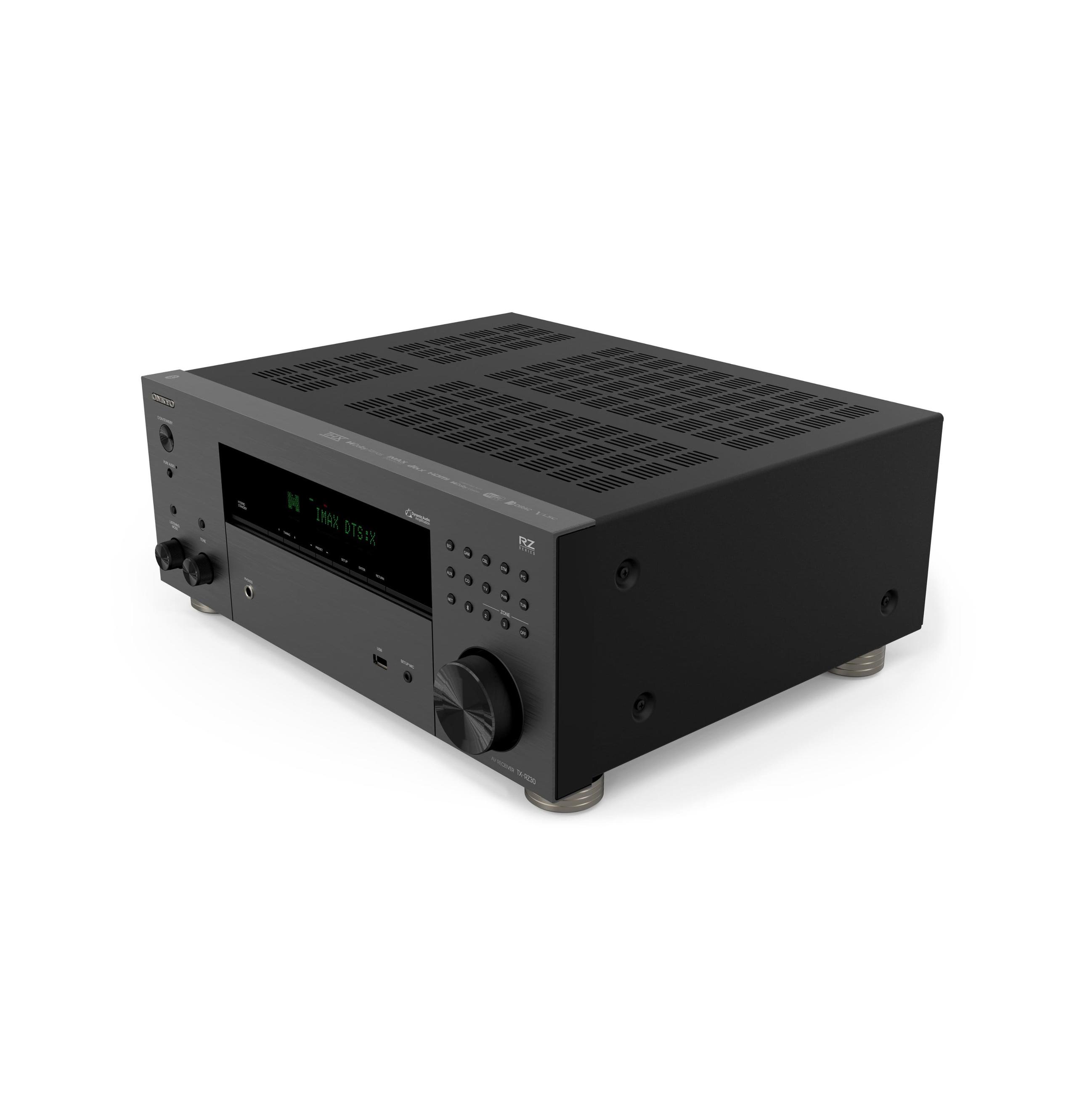
If you're looking to build or upgrade a home theater system, choosing the right AV receiver is crucial. Today we'll compare the $1,199 Onkyo TX-RZ30 and $649 Yamaha RX-V6A to help you make an informed decision.
AV receivers are the brains and muscle of any home theater setup. They handle everything from processing surround sound formats to switching between video sources, while also providing the power to drive your speakers. Think of them as traffic controllers that ensure all your audio and video signals get to the right place, in the best possible quality.
The technology has evolved significantly in recent years. We've seen the introduction of 8K video support, more sophisticated room correction systems, and better integration with streaming services. Both receivers we're looking at today reflect these advances, though in different ways.
The Onkyo TX-RZ30 offers 9.2 channels, while the RX-V6A provides 7.2 channels. But what does this mean for your home theater?
With 9.2 channels, the TX-RZ30 can power more complex speaker setups like:
The RX-V6A's 7.2 channels limit you to:
For most living rooms, 7.2 channels are plenty. However, if you're building a dedicated home theater or have a larger space, those extra channels on the TX-RZ30 can make a noticeable difference in creating a more immersive sound field.
This is perhaps the biggest technical difference between these receivers. Room correction software analyzes your space and adjusts the sound to compensate for room acoustics.
The TX-RZ30 uses Dirac Live, considered the gold standard in room correction. It's the same technology used in professional recording studios and high-end home theaters. Dirac Live creates a more precise sound stage and better manages bass response throughout the room.
The RX-V6A uses Yamaha's YPAO system. While effective, it's not quite as sophisticated as Dirac Live. YPAO does a good job with speaker distances and levels but doesn't offer the same level of refinement in frequency response correction.
Both receivers support 8K video and HDMI 2.1 features, but there are important differences:
The TX-RZ30 (released late 2023) offers:
The RX-V6A (released 2020) provides:
In practical use, both receivers deliver excellent sound quality. The TX-RZ30's superior components and processing are most noticeable in these scenarios:
The RX-V6A performs admirably in:
At nearly half the price, the RX-V6A offers exceptional value for most users. You get:
The TX-RZ30's premium price brings:
Consider these factors when choosing:
Having tested both units, I've found the TX-RZ30's Dirac Live room correction makes a noticeable difference in sound quality, especially in problematic rooms. However, for my living room setup, the RX-V6A provides more than enough power and features for enjoyable movie nights and music listening.
The Yamaha RX-V6A represents excellent value for most users, offering strong performance and modern features at a reasonable price. It's perfect for those building a quality home theater without breaking the bank.
The Onkyo TX-RZ30 is the clear choice for enthusiasts who want the best performance and maximum flexibility. Its superior room correction, additional channels, and better processing justify the premium price for those who will appreciate these advantages.
Remember, the best receiver is the one that fits your specific needs, room, and budget. Both these units are capable performers that will serve well in their intended use cases.
| $1,199 Onkyo TX-RZ30 9.2 Channel AV Receiver | $649 Yamaha RX-V6A 7.2 Channel AV Receiver |
|---|---|
| Channels - Determines how many speakers you can power and your surround sound setup options | |
| 9.2 channels (supports up to 5.1.4 or 7.1.2 setups) | 7.2 channels (supports up to 5.1.2 setup) |
| Room Correction - Critical for optimizing sound quality in your specific space | |
| Dirac Live (professional-grade calibration) | YPAO (good but basic calibration) |
| Power Output - Affects volume capability and sound clarity | |
| 100W/channel (higher quality amplification) | 100W/channel (standard quality amplification) |
| HDMI Ports - Determines how many devices you can connect | |
| 7 inputs/2 outputs (all full HDMI 2.1a) | 7 inputs/1 output (limited HDMI 2.1) |
| Video Support - Important for future-proofing with newest TVs/projectors | |
| 8K/60Hz, 4K/120Hz on all ports, HDR10+ | 8K/60Hz, 4K/120Hz on select ports, no HDR10+ |
| Streaming Features - Affects how easily you can play music | |
| Wi-Fi, AirPlay 2, Chromecast, Spotify Connect, Sonos compatible | Wi-Fi, AirPlay 2, Spotify Connect, MusicCast |
| Gaming Features - Important for latest gaming consoles | |
| Full VRR, ALLM, QFT support (excellent for gaming) | Basic VRR, ALLM support (good for gaming) |
| Build Quality - Affects longevity and sound quality | |
| THX Certified, premium components | Standard components, good build quality |
The $1,199 Onkyo TX-RZ30 is better for dedicated home theaters due to its 9.2 channels, superior Dirac Live room correction, and THX certification. However, the $649 Yamaha RX-V6A is excellent for casual home theater setups in living rooms.
We've done our best to create useful and informative comparisons to help you decide what product to buy. Our research uses advanced automated methods to create this comparison and perfection is not possible - please contact us for corrections or questions. These are the sites we've researched in the creation of this article: youtube.com - onkyo.com - cnet.com - audioholics.com - theabsolutesound.com - bestbuy.com - audiosciencereview.com - onkyo.com - onkyo.com - ecoustics.com - cine-craft.de - soundandvision.com - soundandvision.com - bestbuy.com - hometheaterreview.com - usa.yamaha.com - au.yamaha.com - bestbuy.com - manual.yamaha.com - hifireport.com - my.yamaha.com - shop.usa.yamaha.com - crutchfield.com